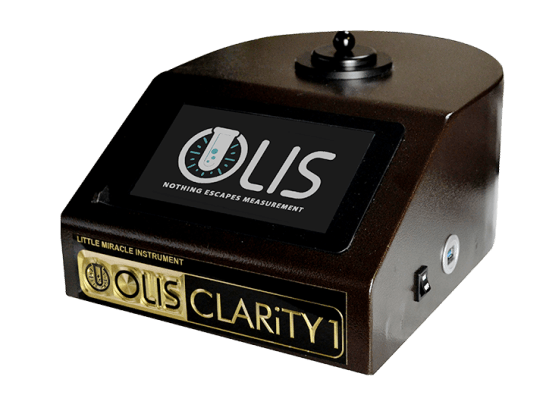Getting The Uv/vis To Work
Branch of spectroscopy Table-top spectrophotometer Beckman IR-1 Spectrophotometer, ca. 1941 Beckman Design DB Spectrophotometer (a double beam model), 1960 Hand-held spectrophotometer used in graphic industry Spectrophotometry is a branch of electro-magnetic spectroscopy interested in the quantitative measurement of the reflection or transmission properties of a product as a function of wavelength.
Spectrophotometry is a tool that hinges on the quantitative analysis of particles depending on how much light is taken in by colored compounds.
The 2-Minute Rule for Uv/vis/nir
A spectrophotometer is frequently used for the measurement of transmittance or reflectance of options, transparent or opaque solids, such as sleek glass, or gases. Numerous biochemicals are colored, as in, they take in visible light and therefore can be measured by colorimetric treatments, even colorless biochemicals can often be transformed to colored compounds ideal for chromogenic color-forming reactions to yield substances suitable for colorimetric analysis.: 65 Nevertheless, they can also be designed to measure the diffusivity on any of the listed light ranges that normally cover around 2002500 nm using various controls and calibrations.
An example of an experiment in which spectrophotometry is utilized is the determination of the equilibrium constant of a solution. A certain chain reaction within a service may happen in a forward and reverse direction, where reactants form products and products break down into reactants. At some point, this chain reaction will reach a point of balance called an equilibrium point.
Getting The Uv/vis To Work
The quantity of light that travels through the service is indicative of the concentration of particular chemicals that do not permit light to travel through. The absorption of light is because of the interaction of light with the electronic and vibrational modes of molecules. Each type of molecule has an individual set of energy levels connected with the makeup of its chemical bonds and nuclei and hence will absorb light of specific wavelengths, or energies, resulting in unique spectral properties.
Making use of spectrophotometers covers numerous scientific fields, such as physics, materials science, chemistry, biochemistry. circularly polarized luminescence, chemical engineering, and molecular biology. They are widely utilized in many industries consisting of semiconductors, laser and optical manufacturing, printing and forensic assessment, along with in laboratories for the study of chemical compounds. Spectrophotometry is frequently used in measurements of enzyme activities, determinations of protein concentrations, decisions of enzymatic kinetic constants, and measurements of ligand binding reactions.: 65 Ultimately, a spectrophotometer is able to figure out, depending upon the control or calibration, what substances are present in a target and precisely how much through computations of observed wavelengths.
Developed by Arnold O. Beckman in 1940 [], the spectrophotometer was created with the help of his coworkers at his business National Technical Laboratories founded in 1935 which would become Beckman Instrument Business and eventually Beckman Coulter. This would come as a service to the formerly developed spectrophotometers which were unable to absorb the ultraviolet properly.
The Ultimate Guide To Uv/vis/nir
It would be discovered that this did not provide satisfactory results, therefore in Design B, there was a shift from a glass to a quartz prism which permitted much better absorbance results - UV/Vis/NIR (https://papaly.com/categories/share?id=82b22f606fb5496cbfab4f86fdfbca1c). From there, Model C was born with a modification to the wavelength resolution which wound up having three systems of it produced
It irradiates the sample with polychromatic light which the sample takes in depending upon its residential or commercial properties. It is transmitted back by grating the photodiode variety which discovers the wavelength region of the spectrum. Given that then, the development and implementation of spectrophotometry gadgets has increased exceptionally and has become one of the most innovative instruments of our time.

The Of Uv/vis
The grating can either be movable or repaired.
In such systems, the grating is fixed and the strength of each wavelength of light is measured by a various detector in the range. Additionally, most modern mid-infrared spectrophotometers use a Fourier transform strategy to acquire the spectral info - https://www.slideshare.net/julieanndesalorenz30. This strategy is called Fourier change infrared spectroscopy. When making transmission measurements, the spectrophotometer quantitatively compares the fraction of light that goes through a referral option and a test solution, then electronically compares the intensities of the 2 signals and calculates the portion of transmission of the sample compared to the reference requirement.
Comments on “Uv/vis - An Overview”